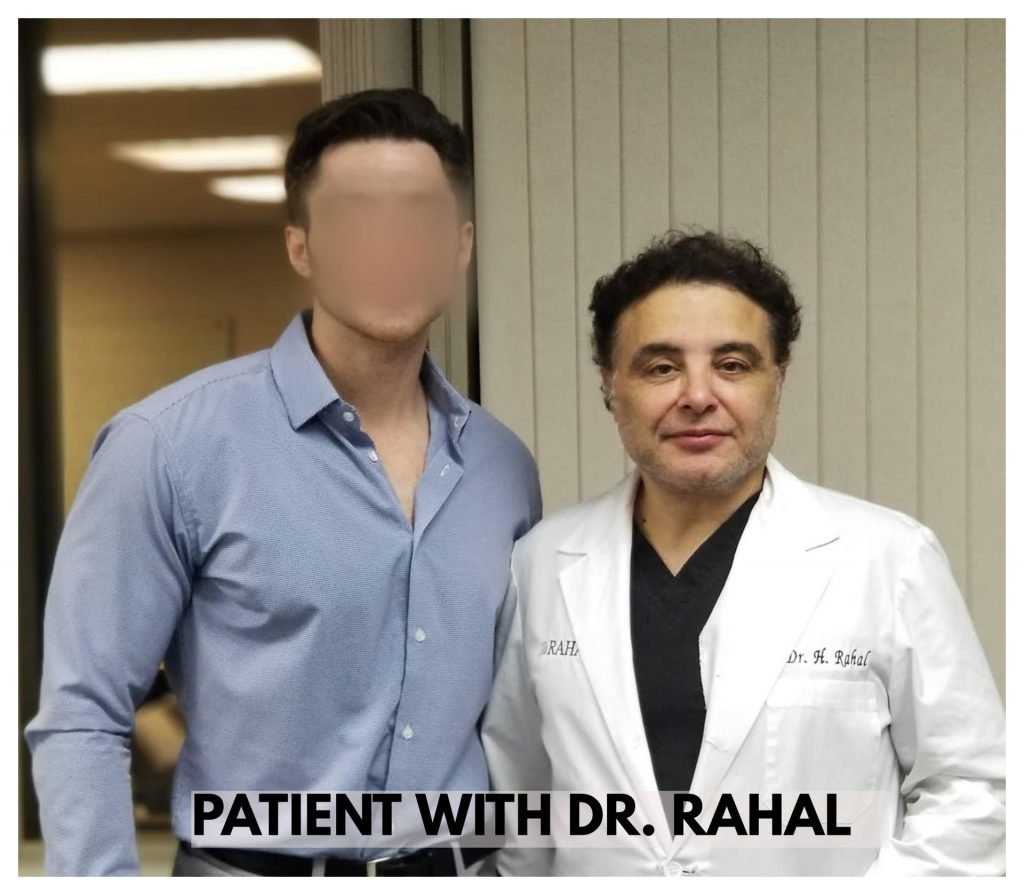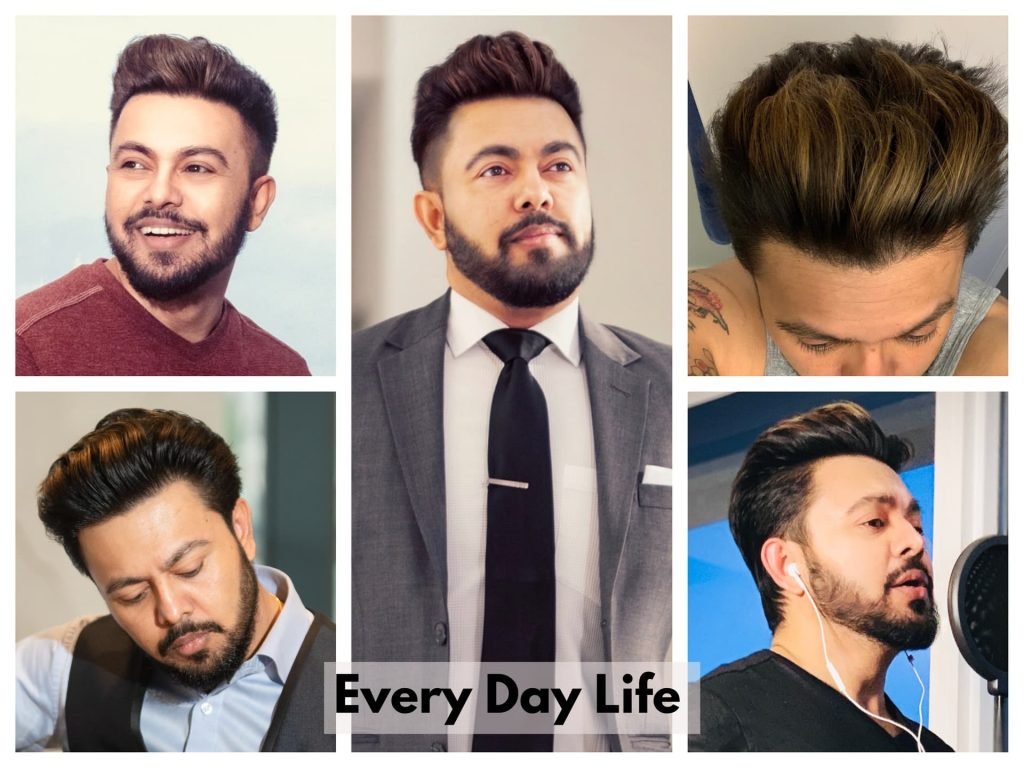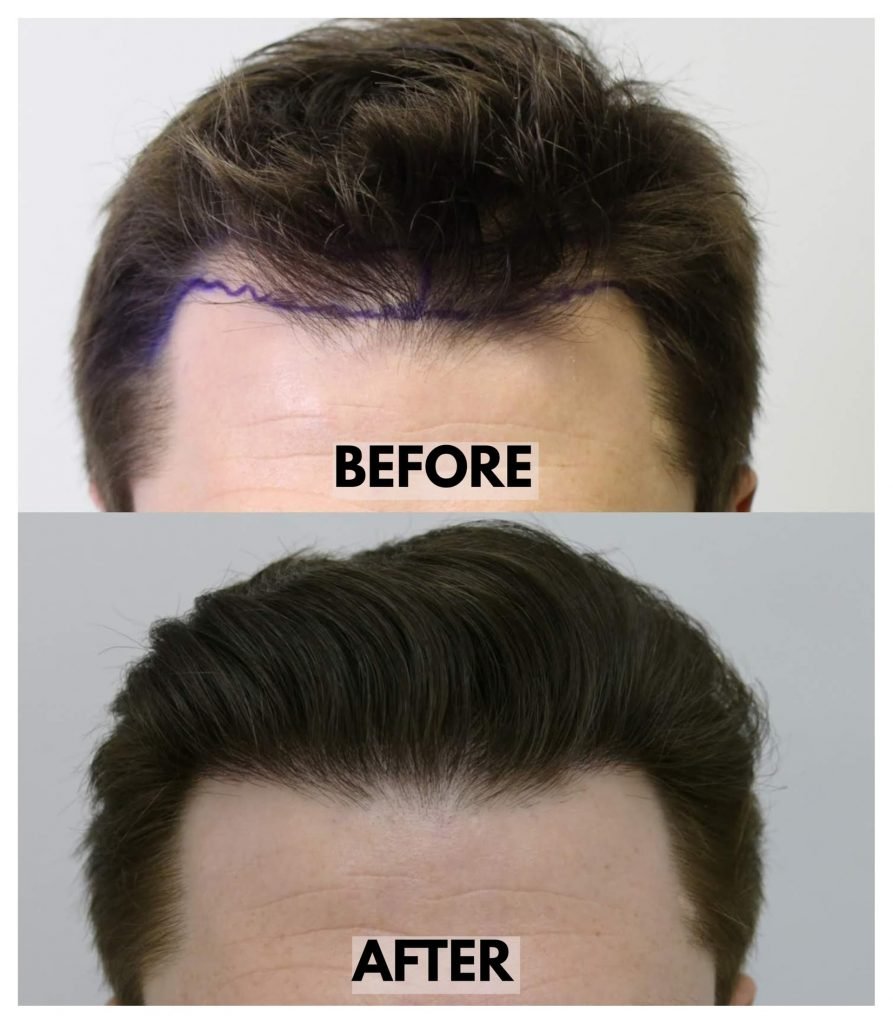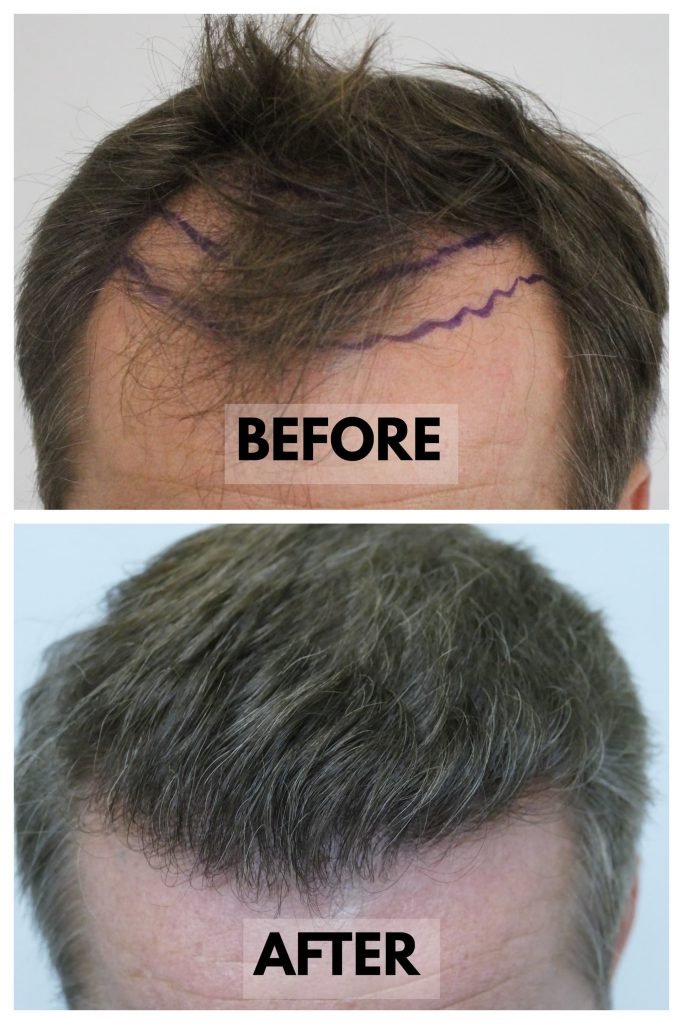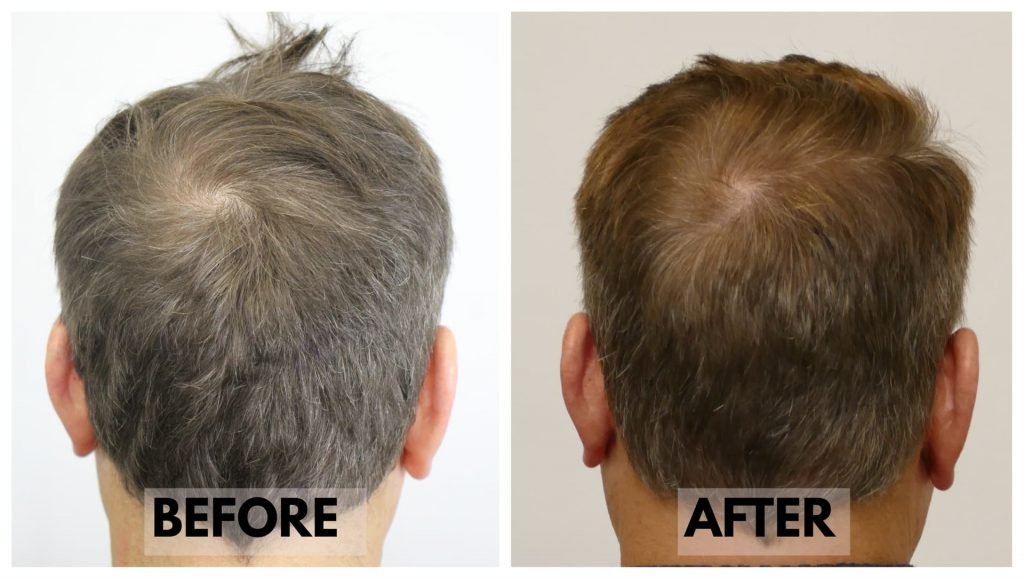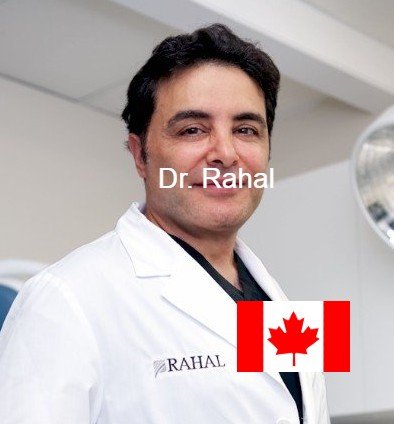home > find a doctor > rahal hair transplant ottawa & beverly hills
Rahal Hair Transplant Ottawa & Beverly Hills

Dr. Rahal Hair Transplant Specialities
-
FUE
Follicular Unit Extraction
-
SMP
Scalp Micropigmentation
-
SMP
Scalp Micropigmentation
-
EYEBROW
Eyebrow transplant
About Dr. Rahal Hair Transplant

Dr. Rahal is a popular hair transplant clinic with surgical centers in Ottawa (Canada) and Beverly Hills (US).
Since 1995, Dr. Rahal's mission has been to help people with hair loss to look and feel their best by providing incredibly natural-looking hair transplant procedures with expert and compassionate care.
Dr. Rahal's hair transplant clinic adopts the best practices in the hair transplant industry, using the latest technologies available and always putting the needs of our patients first.
The clinic strives to focus on the quality of hair transplants and the satisfaction of their patients.
Rahal Hair Institute specializes in an ultra natural hairline by utilizing only follicular units in high-density concentrations. This state-of-the-art method of hair replacement results in the most natural and undetectable dense hairline possible.
Rahal Hair Institute's founder and medical director, Dr. H. Rahal, has dedicated his professional life to providing his patients with the best hair transplant techniques available. These include: follicular unit transplant (FUT or FUSS), trichophytic scar closure, large mega sessions, high density transplants, and natural hairlines - all at affordable hair transplant costs. Dr.Rahal is committed to delivering outstanding hair transplant procedures that make a positive difference in the lives of his patients. The hair transplant photo gallery and the hair transplant testimonials illustrate just some examples of this dedication.
Fill out the form below for the latest in hair restoration and free consultaitons
Rahal FUE Hair Transplant

Dr. Rahal - Follicular Unit Extraction or FUE Hair Transplant:
Follicular Unit Extraction (FUE) is one of the latest advancements in hair transplantation. FUE differs from the strip surgery in its method of harvesting the donor area. Those patients who prefer to avoid the donor scar from the strip surgery may take advantage of the FUE procedure.
We still utilize the follicular unit approach for the restoration process but instead of removing a whole strip we transplant one individual follicular unit at a time. The instrumentation we use is so small that the donor area is left with tiny, almost invisible marks. The main advantage of this approach is that it provides flexibility to have a very short hairstyle or even shave the donor area.
With FUE hair transplantation, the donor hair available for extraction is maximized due to the ability of Dr. Rahal to harvest hair from throughout the 'permanent zone', including nape hair. Additionally, Dr. Rahal can select the follicular units that will offer the most hairs per graft, and produce an optimal yield. Conversely, strip procedures limit surgeons to using only those hairs found in a single strip of scalp tissue.
Sometimes FUE & FUT hair transplant surgery can be combined under the correct circumstances to maximize the donor area and provide the most follicular units to be harvested in one procedure. This could benefit those in an advanced Norwood Scale of hair loss and looking to achieve the best coverage and density in one hair transplant session.
FUE is a particularly good option for those with increased risk of donor scarring (Asians, for example). It also serves as an alternative for those who do not have enough scalp laxity to undergo traditional strip excision. FUE can even be used to repair linear donor scars (from previous strip procedures) that cannot be excised.
During the FUE post operative healing period, there are only a few limitations placed upon the patient for the first 2 weeks or so. Patients rarely report any donor area pain from the excision area. The donor area can be washed as vigorously as necessary. Hair grows out from the donor area fairly quickly, so by one week after an FUE procedure most donor wounds will be covered by a short beard-like growth of the hair making the donor excisions nearly undetectable.
The table below summarizes the pros and cons of Follicular Unit Extraction:
Advantages of FUE
* No linear scar
* No need for sutures
* Good choice of procedure for patients with short hair
* Good option for patients with previous scarring or a tight scalp
* Good choice if a limited number of grafts are required
* Quick healing time
* Minimal discomfort after surgery
* Less downtime/able to resume normal activities and exercise quickly
Disadvantages of FUE
* Time consuming procedure
* Costs more than FUT
* Risk of damage to the follicular units
* Limited supply of donor hair as some hair must be left to cover the rest of that area
* Small scars may obstruct nearby follicular units which can be problematic if further sessions are required
* Not enough suitable candidates for unit extraction than with FUT
* May be difficult to achieve an 'even spread' of units
* More than one session is needed
Fill out the form below for the latest in hair restoration and free consultations
Follicular Unit Hair Transplant

Dr. Rahal - Follicular Unit Transplant:
The concept of follicular unit transplants is to relocate hair and its respective follicles from the donor area - the safe zone in the back and sides of the head - to the recipient areas - front, top or crown of the head, eyebrows, eyelashes and facial hair.
Strip Method:
The strip method involves removing a small strip of hair, which may include thousands of follicular units. The strip is then divided into individual grafts, called follicular units, by utilizing stereoscopic microscopes for magnification. It is essential to do this step with the microscope in order to avoid damaging grafts. Each of these grafts may contain one, two or three hairs.
This type of dissection approach allows us to transplant thousands of follicular units and ultimately thousands of hairs in one surgery at one time. A session may vary from a few hundred grafts to more than 5,000 grafts in a single procedure.
This method will leave a tiny donor scar that will be covered by the surrounding hair. Yet, the only time you will actually be able to see the scar is if you decide to shave your entire head.
Suturing Techniques
Trichophytic scar, a unique way of removing the strip and closure, is currently used on all our patients. The advantage of this scar-closure technique is to allow the hairs at the closure point to grow right through the scar. This will add camouflage to the scar and reduce its visibility.
Fill out the form below for the latest in hair restoration and free consultations
Eyebrow Hair Transplant at Rahal Hair Clinic

Eyebrow hair maybe lost due to overzealous plucking, trauma or genetic/racial reasons.
Using ultra follicular unit transplant techniques, Dr. Rahal can restore these lost eyebrow hairs in a natural and undetectable fashion. The end result will we mimic the pre loss conditions.
The key elements in achieving undetectable transplanted eyebrows will depend on the direction and orientation of the transplanted hairs as well as the transplanted density.
Fill out the form below for the latest in hair restoration and free consultations
Hair Transplant Graft Growth Rate
Hair transplant graft growth rate and growth timeline according to Rahal Hair Transplant clinic.
1-12 days post-op
- Each patient is different but the average patient can expect some mild swelling in the forehead area. The swelling usually begins on day three and is completely gone by the day six mark.
- The patient also develops scabs at the recipient sites and these usually fall off between 10 – 14 days.
- Any redness that has lingered after the surgery is usually gone by day seven and the recipient area is slightly pinkish for the next few weeks.
12-14 days post-op
- Between 12 – 14 days after the surgery the sutures are ready to be removed. This process can be performed by Dr. Rahal or by your local doctor or medical clinic.
3-5 weeks post-op
- Three weeks or so after your procedure you may begin to experience some shedding of the transplanted hairs. This is completely normal and is to be expected. This occurs due to the temporary dormant phase that all hair grafts go through after any hair restoration procedure
1-3 months post-op
- The average patient can expect to see a few new hair sprouts coming through the surface of the scalp.
- This new growth period varies from patient to patient but the average is three months. .
- The new hair will be thin and fine but will thicken over time to grow through the scalp.
5-6 months post-op
- By the fifth to sixth month after the procedure the patient can expect to see substantial new growth. The new hair will be approximately two to three inches in length and the hair shaft will begin to thicken.
8-10 months post-op
- Between months eight and ten the patient will see a big difference. The hair will be longer and much thicker and the overall appearance will be one of greater density than even a few months before.
1 year post-op
- Usually at the one year mark from the procedure the patient will be at the maximum level of density
- The hair that is now growing will continue to grow for the rest of the patient's life and can be cut and styled in any manner.
Fill out the form below for the latest in hair restoration and free consultaitons
Latest Hair Transplant Results from Rahal Hair Clinic
⇒ Dr. Rahal 2550 grafts FUE for a 40 y.o Norwood 3 patient.
⇒ Dr. Rahal 2661 grafts FUE, dramatic transformation, 53 y.o Norwood 3 patient.
⇒ Dr. Rahal 2015 grafts FUE hair transplant for Norwood 3, temple recession.
⇒ Dr. Rahal 2890 grafts FUE hair transplant for Norwood 5.
⇒ Dr. Rahal 1741 grafts FUE hairline reinforcement procedure.
⇒ Dr. Rahal 3021 grafts FUE for Norwood 3, amazing transformation.
Click Rahal Hair Transplant for forum activities.
Fill out the form below for the latest in hair restoration and free consultations
Rahal Hair Clinic has surgical clinics in Ottawa and Toronto (Ontario) Canada.
- Tel 1-877-551-2171
- Email info@rahalhairline.com
- Website rahalhairtransplant.com
Fill out the form below for the latest in hair restoration and free consultations






